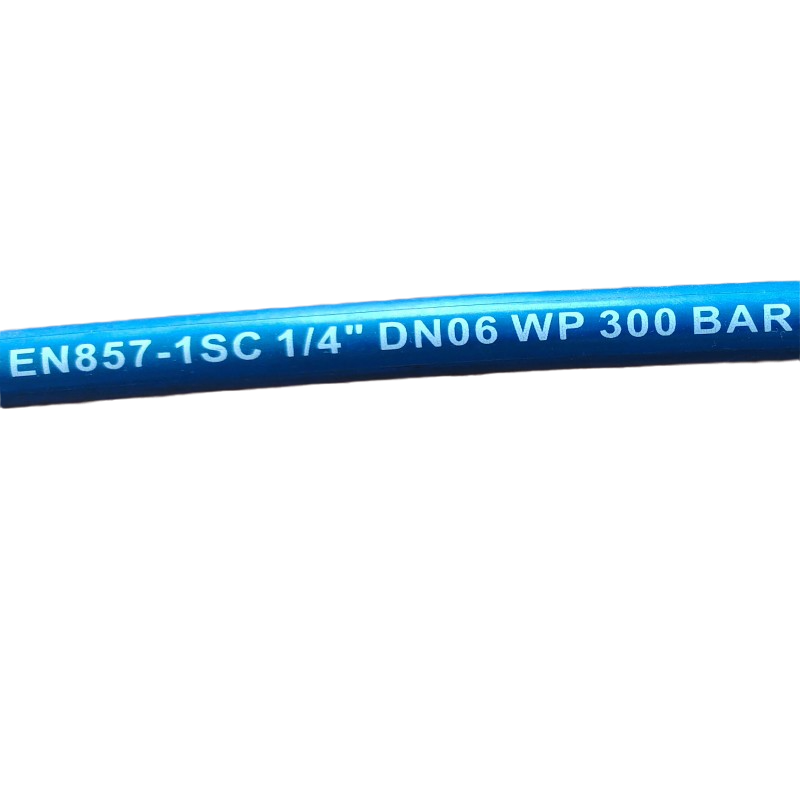335345435
nov . 30, 2024 01:05 Back to list
production ptfe hose
The Production of PTFE Hose A Comprehensive Overview
Polytetrafluoroethylene (PTFE) hoses have gained immense popularity across various industries due to their superior chemical resistance, temperature stability, and non-stick properties. The production of PTFE hoses involves a series of intricate processes that ensure the final product meets the stringent demands of various applications, from food processing to pharmaceuticals and chemical manufacturing. In this article, we will delve into the production process of PTFE hoses, examining the materials, techniques, and quality control measures that contribute to their exceptional performance.
Understanding PTFE and Its Properties
PTFE, commonly known by the brand name Teflon, is a synthetic fluoropolymer developed in the 1930s. Its unique molecular structure bestows it with outstanding properties, such as resistance to high temperatures (up to 260°C or 500°F), chemical inertness, and low friction. These characteristics make PTFE an ideal material for hoses that must withstand aggressive chemicals, high pressures, and extreme conditions.
Raw Material Preparation
The production of PTFE hose begins with the preparation of raw materials. Generally, the process uses fine PTFE powder, which is produced through the polymerization of tetrafluoroethylene gas. This powder is then mixed with agents that facilitate the molding process. Some manufacturers also incorporate additives to enhance specific properties, such as fire resistance or flexibility, depending on the intended application of the hoses.
Extrusion Process
Once the raw material is prepared, the extrusion process begins. In this phase, the PTFE powder is fed into an extruder, where it is subjected to high heat and pressure. The combined heat and force cause the PTFE particles to fuse, forming a consistent rod or tube shape. The diameter of the hose can be adjusted by altering the die used in the extrusion process. This step is critical as it establishes the basic dimensions and wall thickness of the hose.
Sintering
production ptfe hose

After extrusion, the PTFE tubes undergo a process called sintering. Sintering involves heating the extruded tubes in an oven at high temperatures without allowing them to flow. This step allows the particles to bond more tightly together, enhancing the strength, durability, and thermal stability of the finished product. The sintering process also helps eliminate any residual volatiles, ensuring that the hose is free of impurities that could affect its performance.
Braiding and Reinforcement
Although PTFE has excellent tensile strength, it is often reinforced to withstand higher pressures and improve flexibility. This is achieved by braiding the PTFE tube with materials such as polyester or stainless steel. The braiding process involves spirally wrapping these reinforcements around the cured PTFE tube, effectively enhancing its structural integrity. This step is particularly important for applications where the hose may be subjected to significant bending or twisting.
Quality Control
Quality control is an essential aspect of PTFE hose production. Manufacturers conduct rigorous tests to ensure that each hose meets high-performance standards. These tests typically include checking for leaks, burst pressure, and temperature resistance. Furthermore, adherence to industry certifications, such as ISO and FDA standards, ensures that the hoses are safe for use in critical applications like food processing or pharmaceuticals.
Applications of PTFE Hoses
The versatility of PTFE hoses makes them suitable for a wide range of applications. In the chemical industry, they are used for transferring aggressive acids and solvents. In the food sector, PTFE hoses are favored for their non-reactive nature, ensuring that food safety is never compromised. Additionally, they find usage in the pharmaceutical sector for processes that require strict adherence to hygiene standards.
Conclusion
The production of PTFE hoses is a complex process that combines advanced materials science with manufacturing techniques to create high-performance products. From the careful selection of raw materials to rigorous quality control measures, each step is critical to ensure the final product meets the demands of various industries. As technology advances, the production methods for PTFE hoses will likely continue to evolve, further enhancing their capabilities and applications across the globe.
-
SAE 100 R17 Black Smooth Cover Hydraulic Hose
NewsMar.07,2025
-
SAE 100 R17 Black Smooth Cover Hydraulic Hose
NewsMar.07,2025
-
SAE 100 R17 Black Smooth Cover Hydraulic Hose
NewsMar.07,2025
-
SAE 100 R17 Black Smooth Cover Hydraulic Hose
NewsMar.07,2025
-
SAE 100 R17 Black Smooth Cover Hydraulic Hose
NewsMar.07,2025
-
steel wire braided hydraulic hose
NewsMar.07,2025



